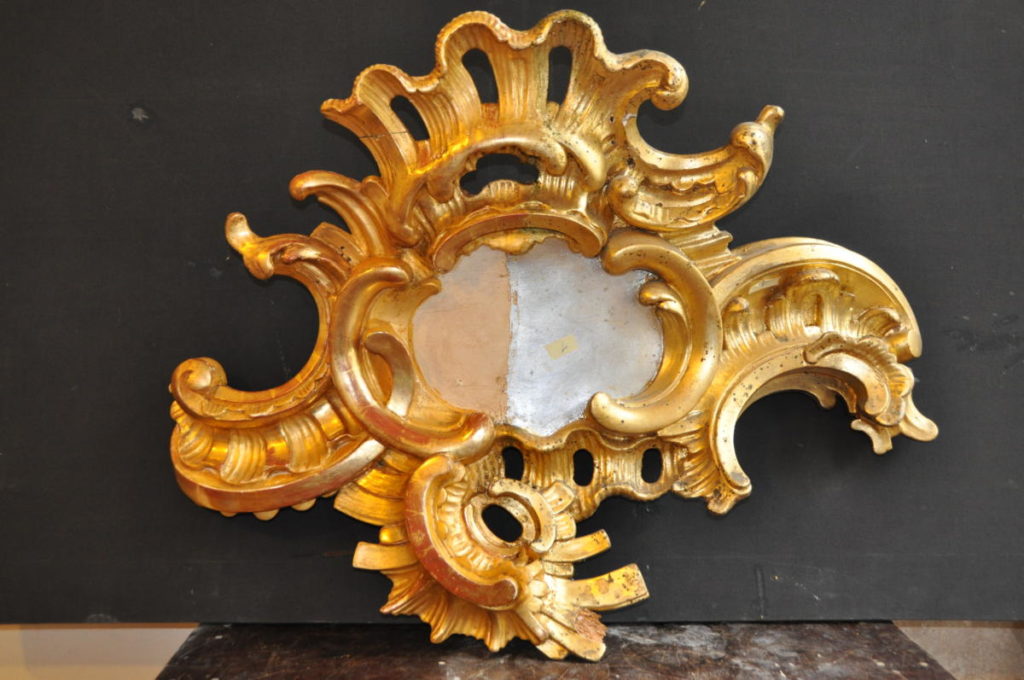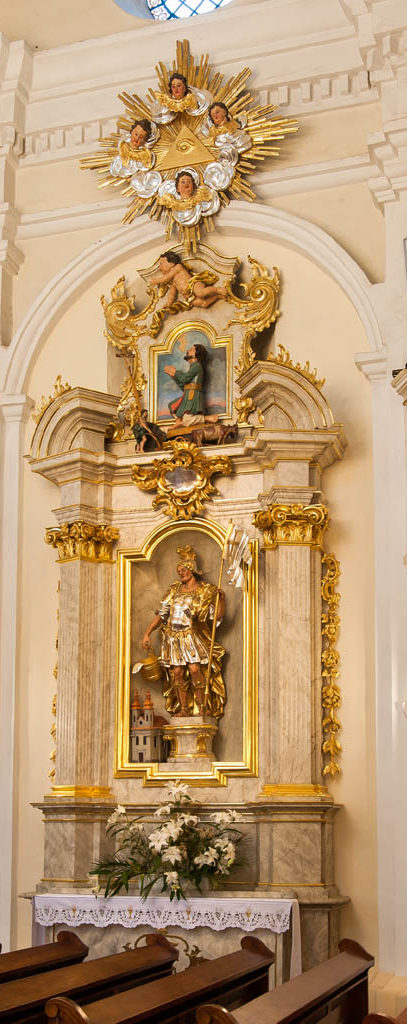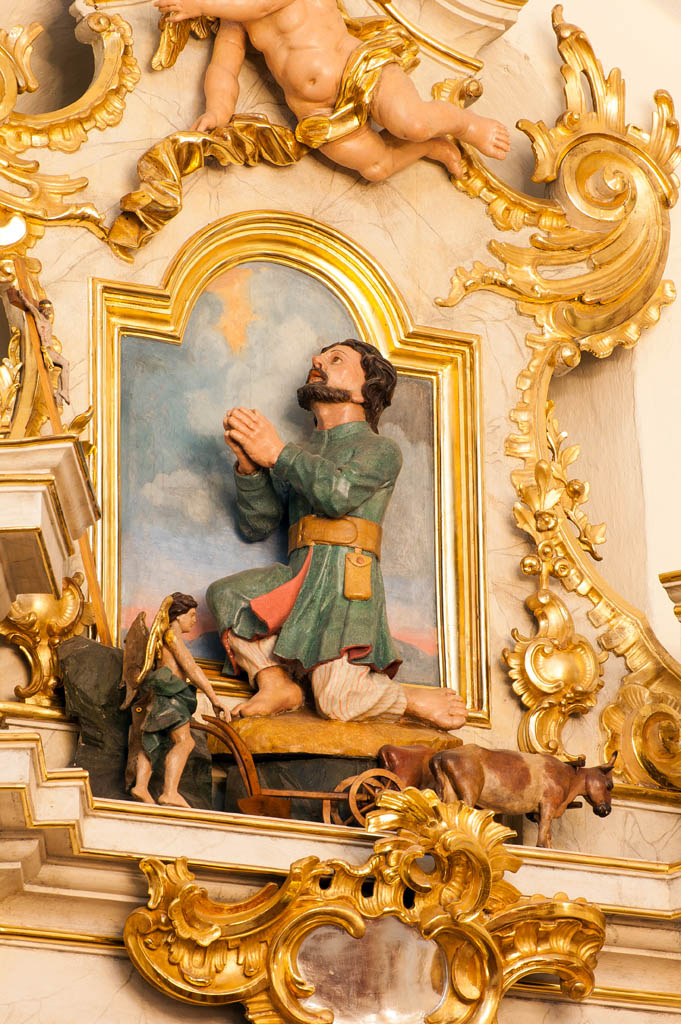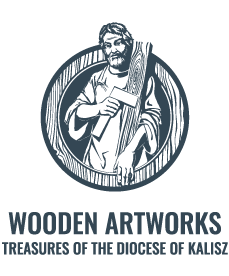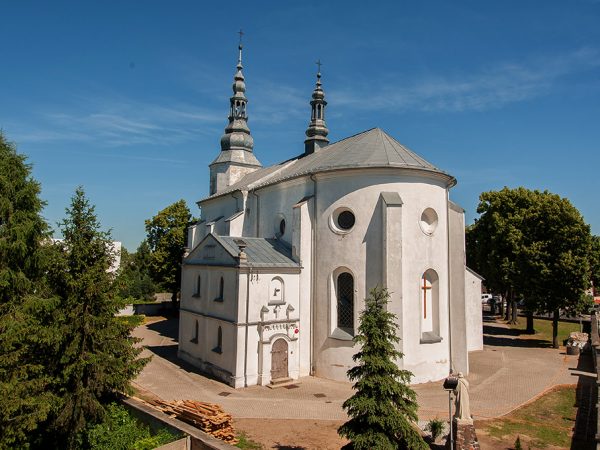
Church of St. Andrew the Apostle in Złoczew
RENOVATION OF THE SIDE ALTAR OF ST. FLORIAN FROM THE CHURCH OF ANDREW THE APOSTLE IN ZŁOCZEW
The side altar of St. Florian, with sculptures of St. Florian and St. Isidore the Laborer from the church of St. Andrew in Złoczew was made in the third half of the 18th century in the rococo style. Unstable humidity and temperature conditions fostered the development of insects which caused mechanical weakening of wood and corruption of its structural coherency in the woodcarved figurative elements and ornaments. Many outlet openings left after xylophages and signs of insect foraging in damaged places were seen. Disintegrated wood lost mechanical strength and cracked next to mounting. Damages were also caused by repaintings and incorrect earlier renovation works.
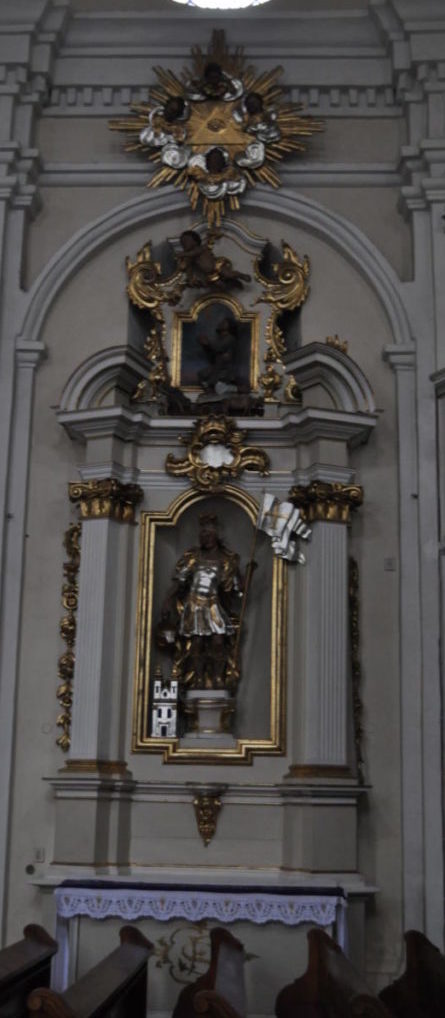
The aim of renovation was to restore the best possible condition of the altar by preventing destruction processes, eradication their effects and restoring aesthetic values with regard to historical values of the object.
Before the proper renovation works started, a preliminary study of the object’s history was done and photographic documentation made. Samples for microchemical tests were taken. Then part of elements were disassembled and transported to the workshop.
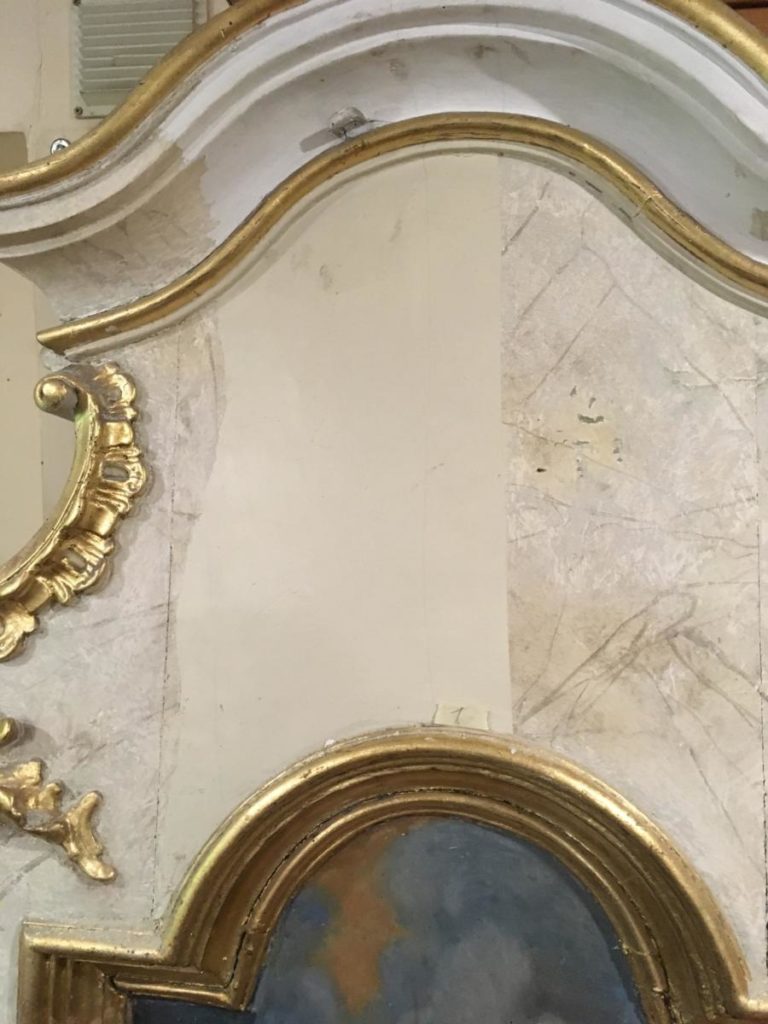
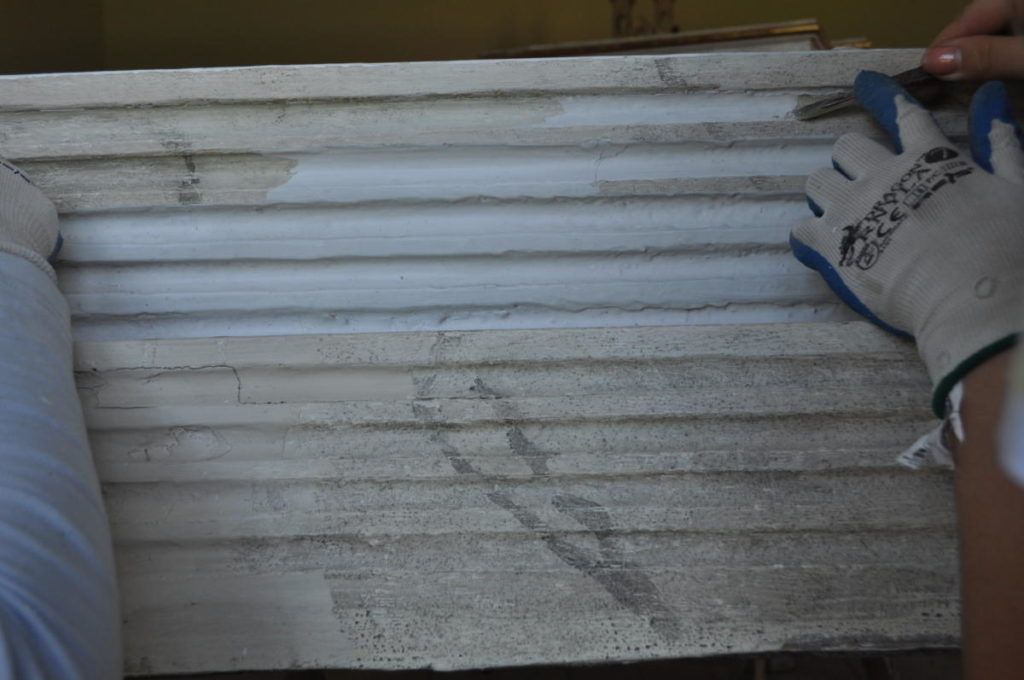
Firstly, the external face and the back were cleaned from surface contamination. Next, bubbles, scales and loosened layers were glued and ironed. The object was sterilized, disinfected and impregnated with an insecticide. The procedure was done by soaking in the impregnate bath (smaller elements), in other cases brushing and compresses were used. Local excess of the impregnate was removed. In the net stage, layers selected for removal were ablated in the area of coloured and gilded polychromy with mechanical and chemical methods. In the effect, coloured decoration of the architectural elements was uncovered as well as the original polychromy on the sculptures. Consolidation of previously glued layers was done with a mixture of waxes and dammar resin. Gilded surfaces were cleaned from unoriginal coatings. Next, necessary carpentry repairs of the construction were done, and then wood losses were filled: deep cracks and slits by plugs, and smaller with epoxy paste. Missing elements of the woodcarved sculpture and ornamental decorations were recreated.
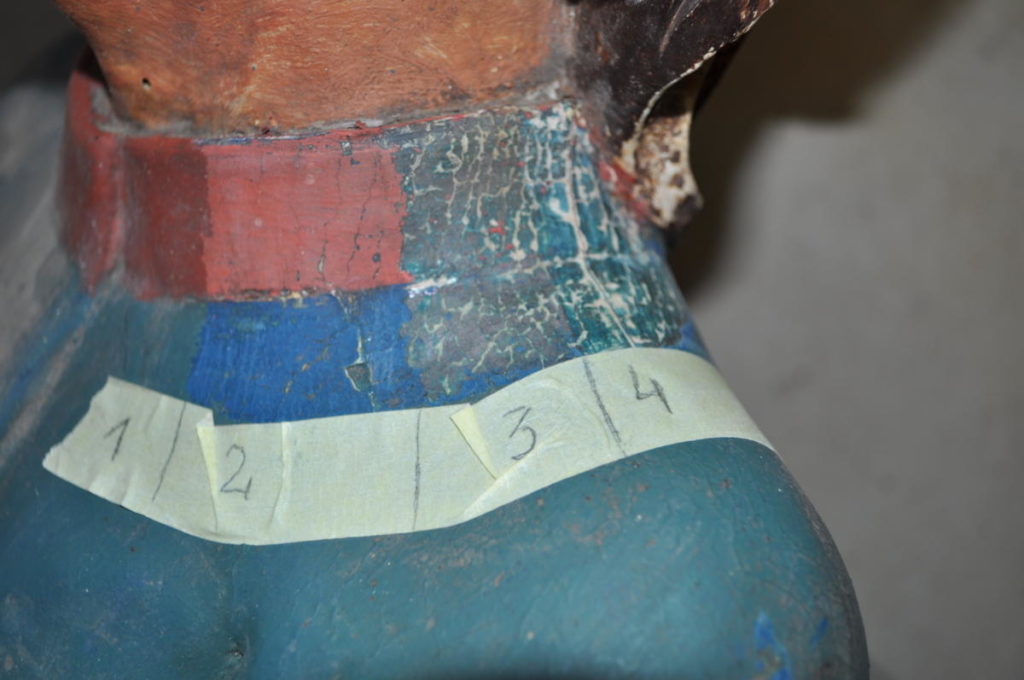
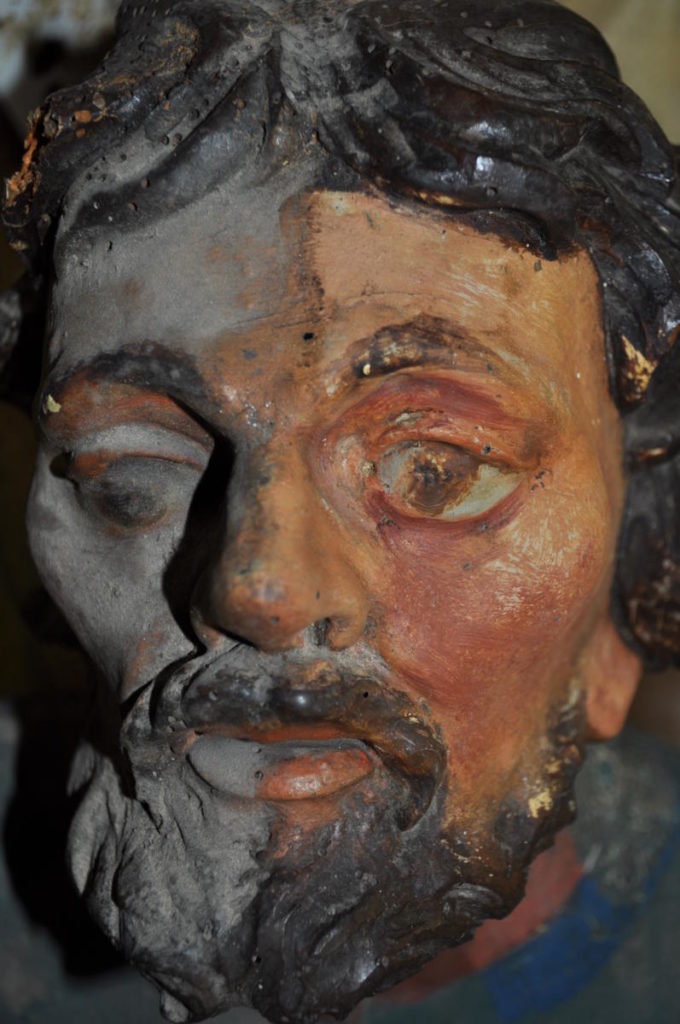
Next, primers were applied on the recreated elements and losses of gilding were filled (chalk-adhesive primers), and fillings under coloured polychromy were made with acrylic putty. Fillings of preserved and reconstruction of missing (or damaged to the degree which disabled preservation and filling) gliding were made with gold and silver leaf according to the original technique with a division into gloss and matt finish. Losses in the parts which preserved in better condition were filled with gold powder.
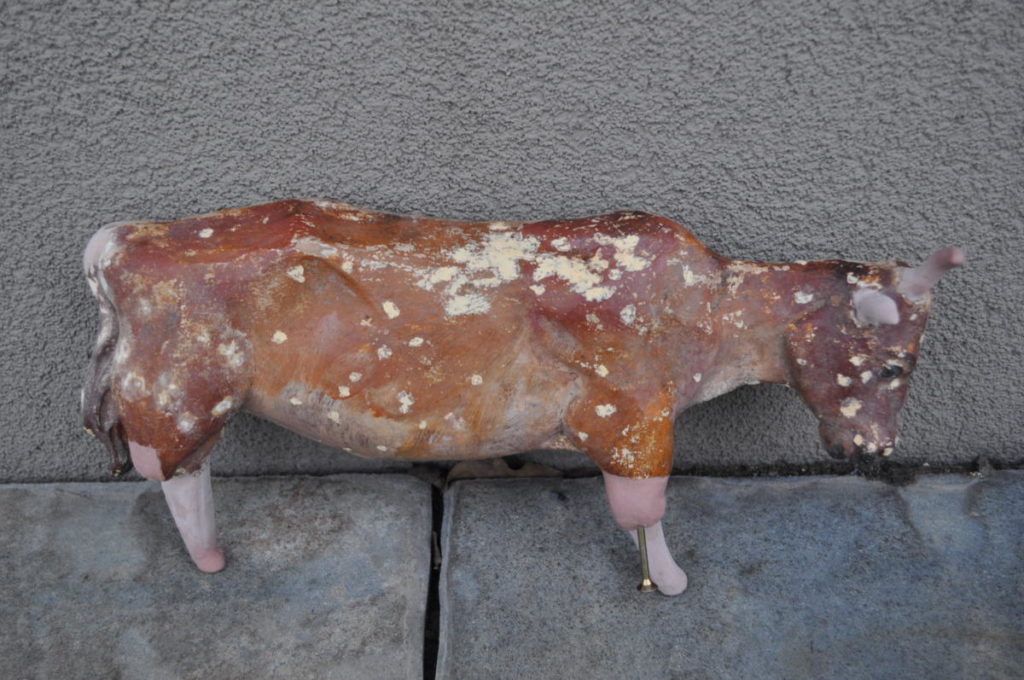
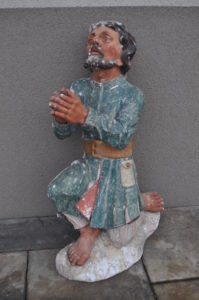
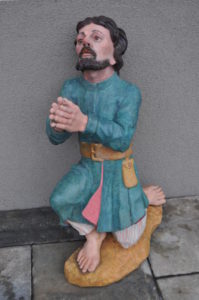
Coloured polychromy on the structure of the altar and the sculptures was protected with dammar varnish, and filled by painting and stippling with acrylic paints, and then glaze was applied. Polychromy was varnished with gloss varnish with an addition of microcrystallite wax.
All mobile elements were mounted in the church, photographic and descriptive documentation was done.
